"A Wonderful Achievement” - Ross and Keith Smith’s Historic Flight to Australia in a Vickers Vimy
By Greg Corbett, Visitor Services Assistant, Anzac Square Memorial Galleries | 4 July 2023

The Vickers Vimy at Adelaide Airport. Photo by Anzac Square Memorial Galleries staff member.
On 10 December 1919, Ross Smith and Keith Smith completed a historic flight from England to Australia in a Vickers Vimy aircraft. After completing the record-breaking flight and arriving in Darwin, the Vickers Vimy made its way around Australia to reach its final destination of Adelaide, but not without several misadventures, one of which saw the plane grounded for some time in Queensland.
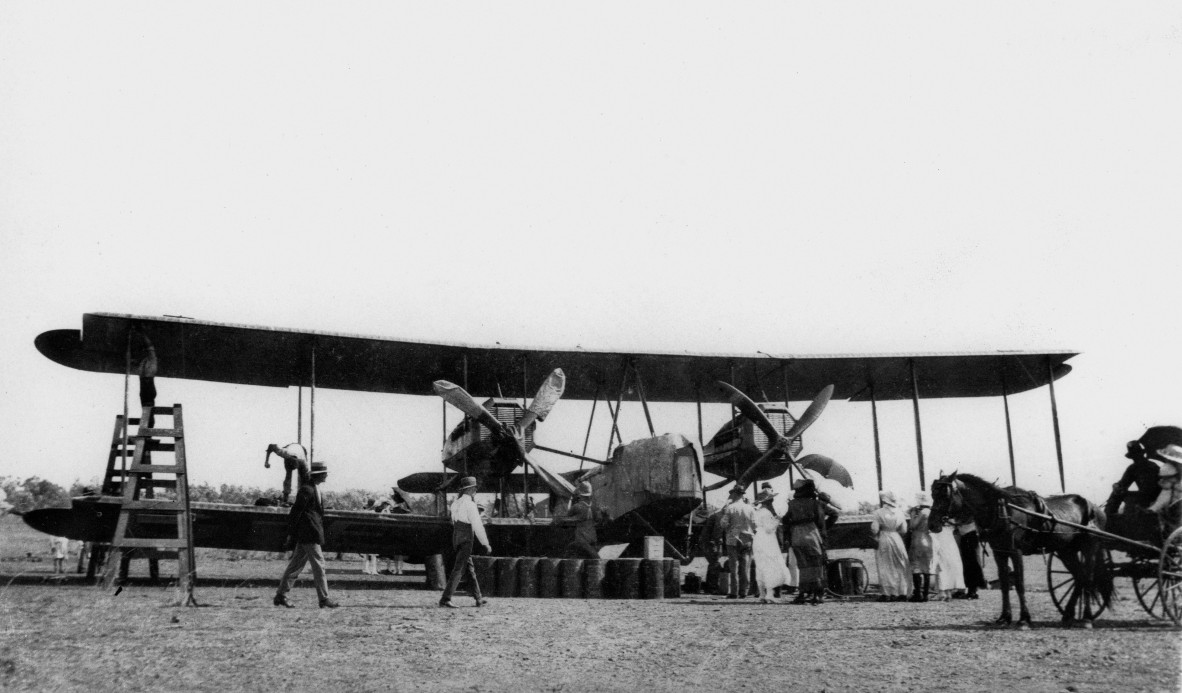
Early Vickers Vimy biplane, next to fuel tanks at the airfield, 1919. Brisbane: John Oxley Library, State Library of Queensland, 2004. Print.
In 1919, Prime Minister Billy Hughes offered a £10,000 reward to the first aircrew to fly from England to Australia. The challenge was taken up by Ross Smith and his brother Keith.
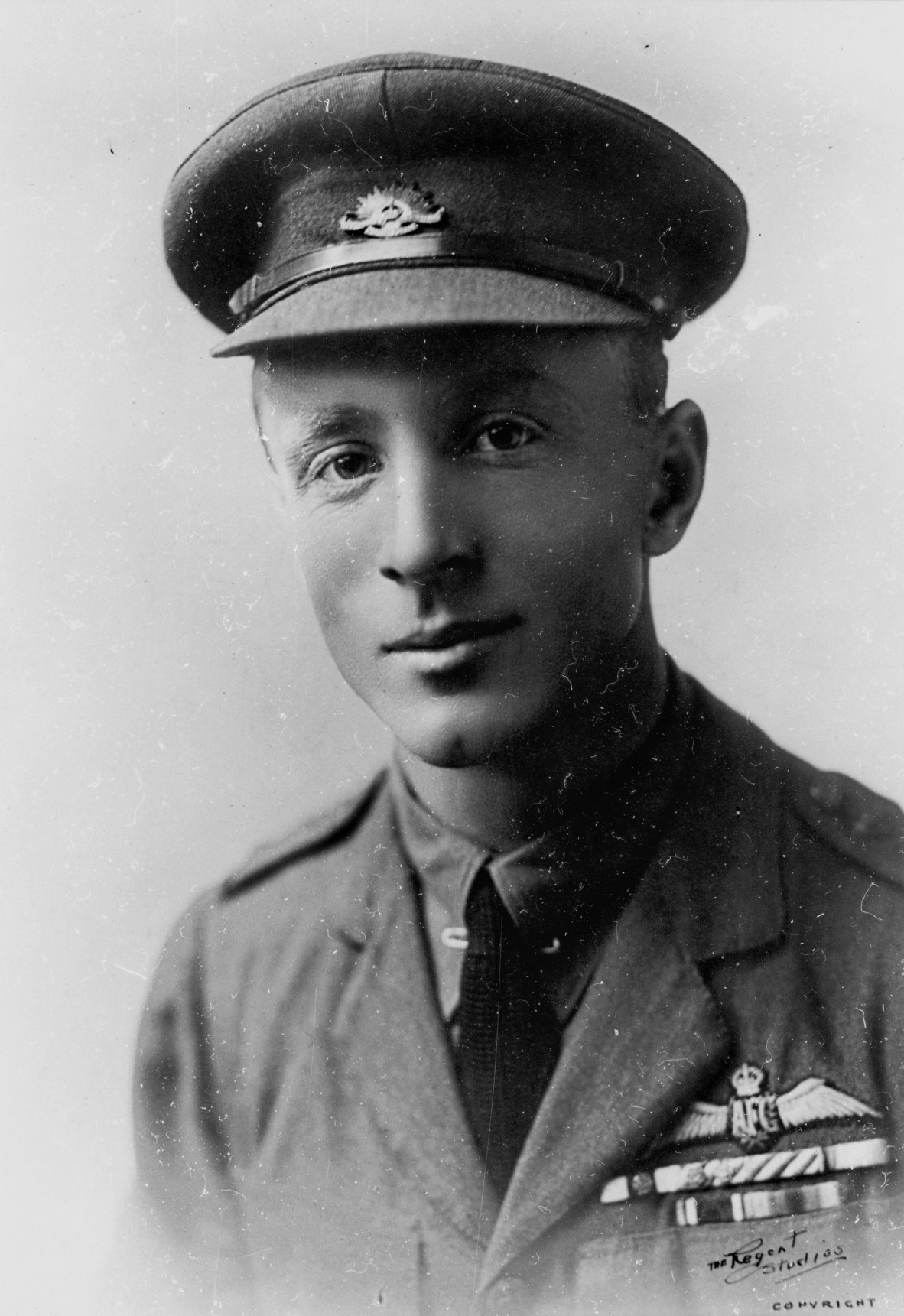
Sir Ross Smith. Brisbane: John Oxley Library, State Library of Queensland, 2005. Print.
Born at Semaphore in Adelaide in 1892, Ross Smith enlisted in World War I in 1914 and served with the 1st Australian Machine Gun Squadron at Gallipoli. He then joined the 67th Australian Squadron of the Royal Flying Corps and served in Palestine as a fighter pilot, for which he was awarded the Military Cross (with bar), and the D.F.C. (with bar). At one time he was the pilot for T.E. Lawrence (a.k.a. Lawrence of Arabia), and even receives several mentions in Lawrence’s book, ‘Seven Pillars of Wisdom’.
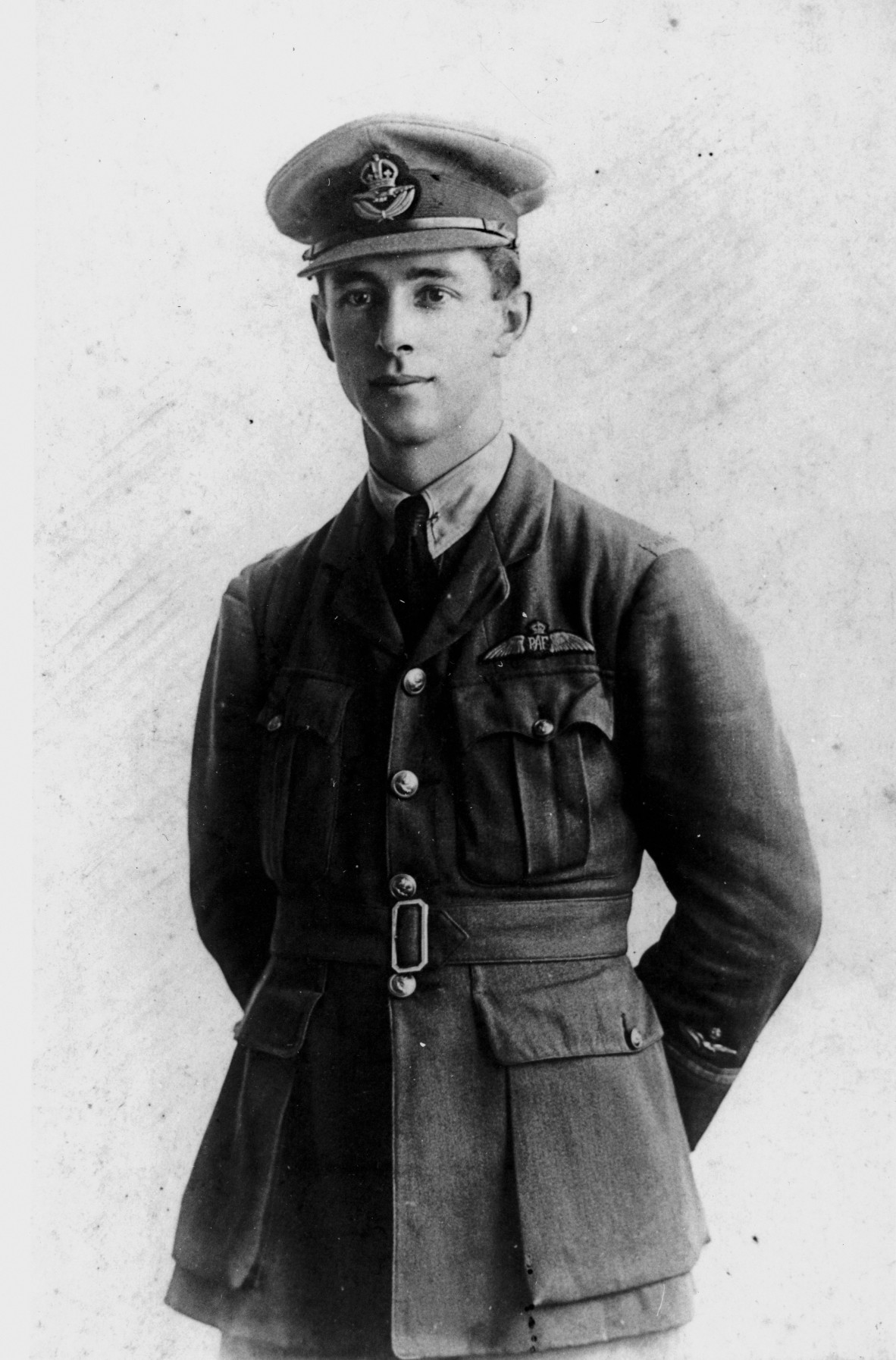
Sir Keith McPherson Smith. Brisbane: John Oxley Library, State Library of Queensland, 2005. Print.
Born in 1890, Ross's older brother Keith was found to be medically unfit for service with the A.I.F. However, after undergoing medical treatment, he paid his own way to England and enlisted in the Royal Flying Corps, where he was accepted into the Officer Cadet Wing in July 1917. Keith was posted to bomber unit No. 58 Squadron but did not see active service. Keith also served as a gunnery instructor in No. 75 Squadron.
For their record-breaking flight attempt, it was decided that Ross and Keith, together with mechanics Wally Shiers and Jim Bennett, would fly in a Vickers Vimy. A biplane designed to conduct bombing raids on Germany, the Vickers Vimy was produced too late to see active service in WWI. Upon seeing the plane for the first time in the Vickers factory, Shiers remarked to Bennett, “My God Benny, fancy trying to fly this to Australia ... she’d never last half the journey.” (SA History Hub 2023) The plane also sported the registration number G-EAOU, which prompted the crew to humorously suggest that it stood for ‘God ‘Elp All Of Us’. Embarking from Hounslow, near London on 12 November 1919, the crew braved torrential rain and other hazardous flying conditions, completing the 18,250-kilometre journey in just under 28 days at an average speed of 137 k/h. One reporter commented that, "Many persons hold the opinion the aviators were very lucky to get here. Perhaps they were; yet it was a wonderful achievement, and a grand advertisement for Australia, it has made the whole world talk." (The Daily Mail 1920)
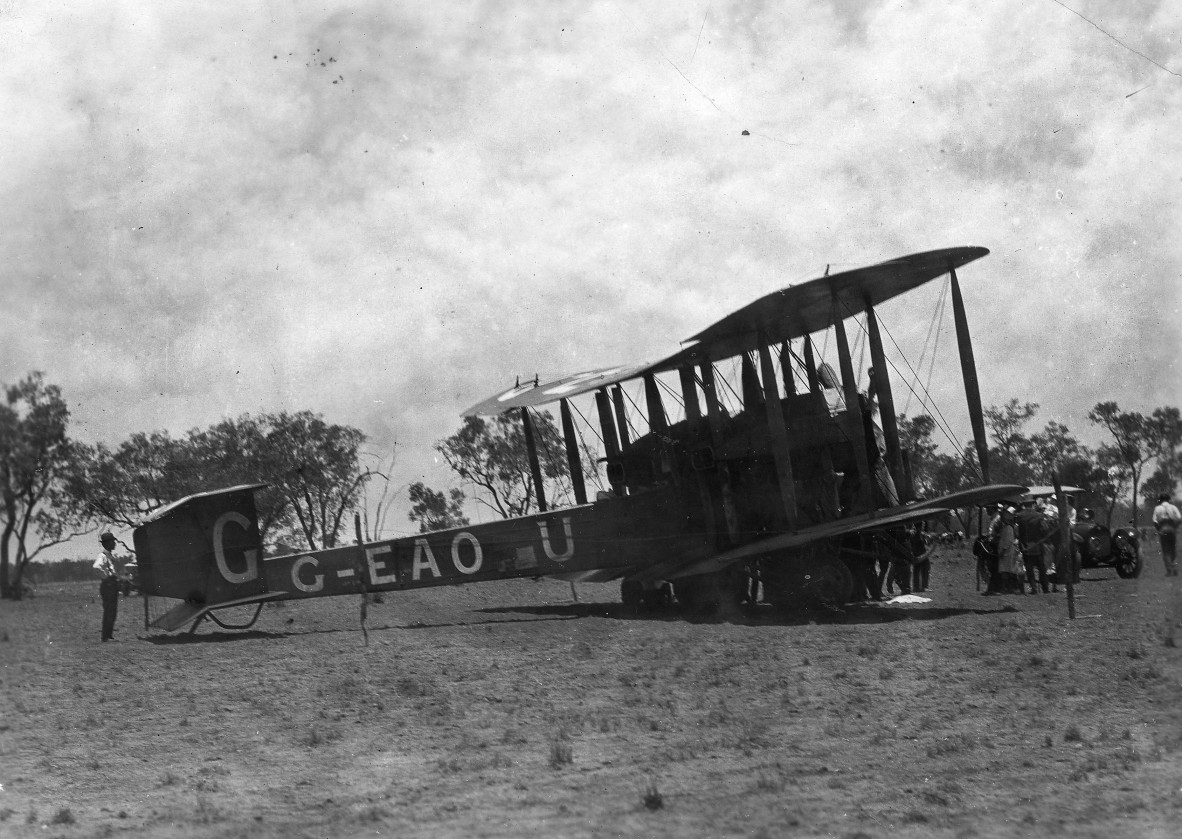
Vickers Vimy biplane bomber G-EAOU. Brisbane: John Oxley Library, State Library of Queensland, 2003. Print.
The subsequent victory lap across Australia would take much longer than the journey thus far, with an extended layover in Queensland after their port-side engine exploded at an altitude of 900 metres, forcing them to make an emergency landing near Charleville. While repairs were underway, the Mayor held a reception at Brisbane Town Hall so that the heads of municipal departments were able to meet Ross and Keith.
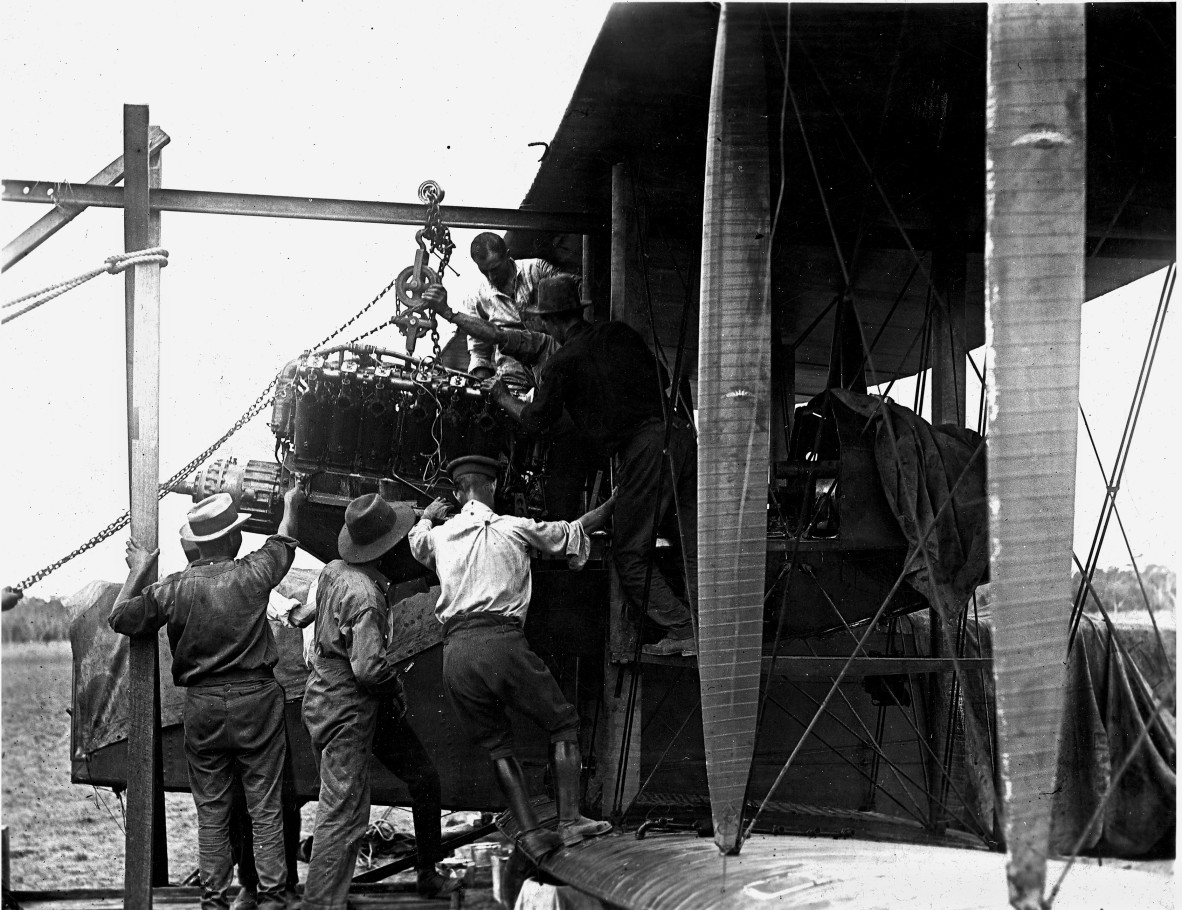
Aircraft engine being installed in a Vickers Vimy biplane bomber G-EAOU by mechanics. Brisbane: John Oxley Library, State Library of Queensland, 2003. Print.
The Vickers Vimy's propellers and Rolls-Royce engine underwent repairs at the Ipswich Railway Workshops. Ross Smith expressed satisfaction with the assistance provided, saying "I must say... I am particularly pleased with the splendid manner in which the railway employees have assisted the mechanics with the work. They were most enthusiastic and everything they were asked to do they did thoroughly, and willingly." (The Daily Mail 1920)
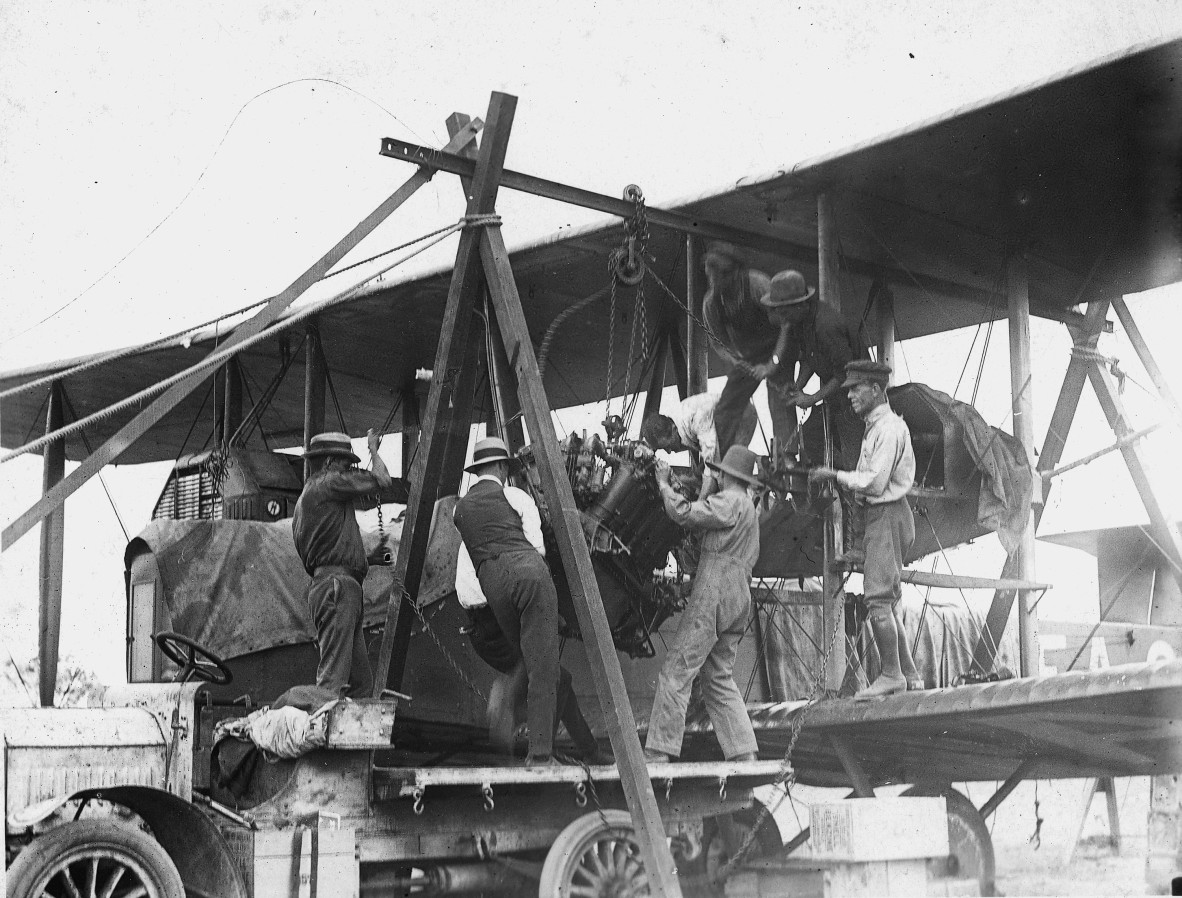
Mechanics installing an engine into a Vickers Vimy biplane bomber G-EAOU. Brisbane: John Oxley Library, State Library of Queensland, 2003. Print.
Once the repairs were complete, the crew continued on to Sydney and Melbourne, reaching their final destination of Adelaide on 23 March 1920. The Smith Brothers were knighted for their achievement. When asked whether he intended to fly back to England in the Vickers Vimy, Ross Smith answered, "I can assure you there is no truth to the rumour... I have no intention of attempting the trip a second time." (Queensland Times 1920)
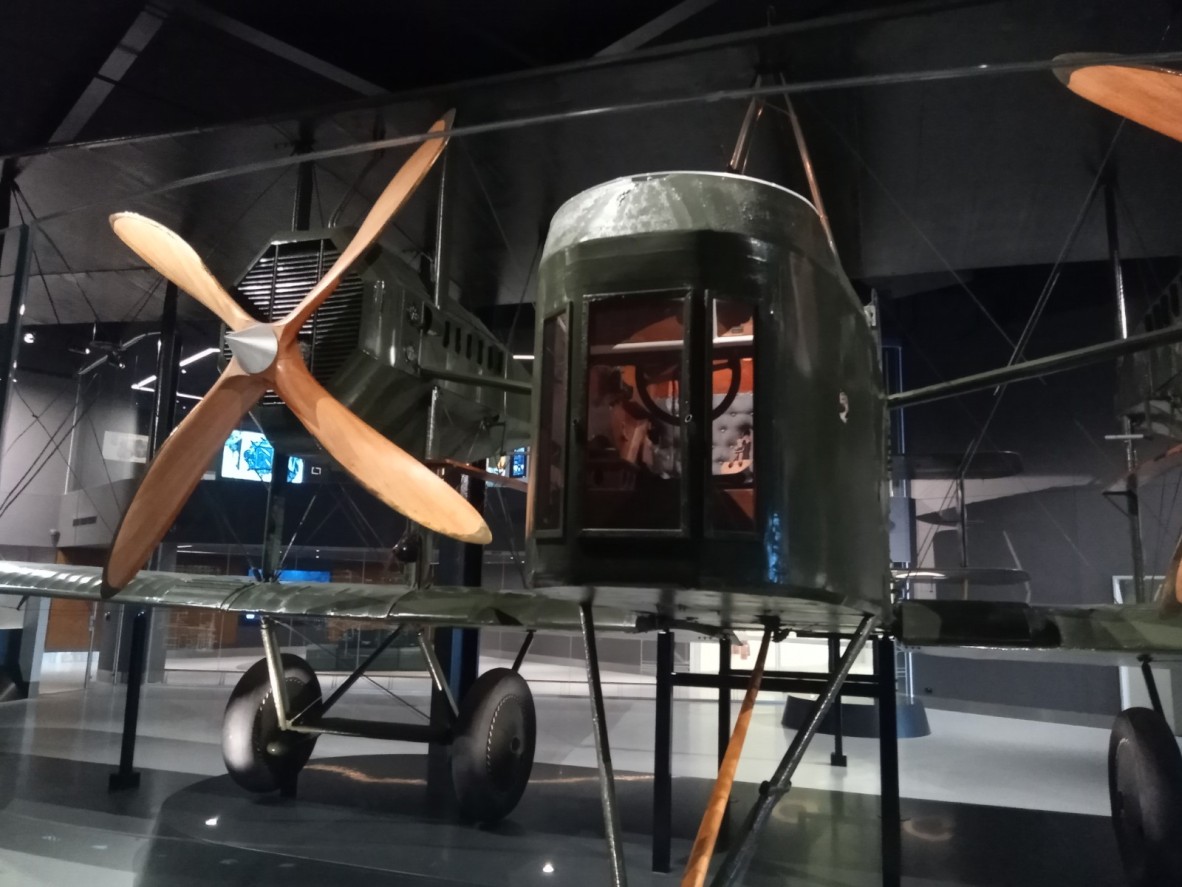
The Vickers Vimy at Adelaide Airport. Photo by Anzac Square Memorial Galleries staff member.
The Vickers Vimy never flew again. The Vimy is now housed at its own exhibition space at Adelaide Airport.
References
-
1920 'FUTURE MOVEMENTS.', Queensland Times (Ipswich, Qld. : 1909 - 1954), 12 January, p. 5. (DAILY.), viewed 02 Jun 2023, http://nla.gov.au/nla.news-article121902480
-
1920 'Ross Smith in Brisbane', The Herald (Melbourne, Vic. : 1861 - 1954), 6 January, p. 8. , viewed 02 Jun 2023, http://nla.gov.au/nla.news-article242164998
-
1920 'THE VICKERS-VIMY.', The Daily Mail (Brisbane, Qld. : 1903; 1916 - 1926), 29 January, p. 4. , viewed 02 Jun 2023, http://nla.gov.au/nla.news-article215421131
-
1920 'The Vickers-Vimy Aeroplane.', The Brisbane Courier (Qld. : 1864 - 1933), 16 January, p. 5. , viewed 02 Jun 2023, http://nla.gov.au/nla.news-article20431596
-
1920 'THE VIMY FLIGHT.', The Daily Mail (Brisbane, Qld. : 1903; 1916 - 1926), 6 February, p. 5. , viewed 02 Jun 2023, http://nla.gov.au/nla.news-article215416473
-
1920 'VICKERS-VIMY.', The Daily Mail (Brisbane, Qld. : 1903; 1916 - 1926), 3 February, p. 4. , viewed 02 Jun 2023, http://nla.gov.au/nla.news-article215423160
-
1920 'VIMY'S FLIGHT.', The Daily Mail (Brisbane, Qld. : 1903; 1916 - 1926), 9 February, p. 4. , viewed 02 Jun 2023, http://nla.gov.au/nla.news-article215421387
-
1922 'SIR ROSS SMITH.', Daily Examiner (Grafton, NSW : 1915 - 1954), 17 April, p. 2. , viewed 02 Jun 2023, http://nla.gov.au/nla.news-article195580558
-
1922 'SIR ROSS SMITH KILLED.', Dubbo Dispatch and Wellington Independent (NSW : 1887 - 1932), 18 April, p. 2. , viewed 02 Jun 2023, http://nla.gov.au/nla.news-article231599121
-
2005 'Propelled into our aviation history', Air Force News (National : 1997 - 2020), 11 August, p. 15. , viewed 06 Jun 2023, http://nla.gov.au/nla.news-article259478216
-
Adelaide Airport n.d., 'First Flight Across the World - The Vickers Vimy', viewed 26 June 2023, https://www.adelaideairport.com.au/vickers-vimy/discover/the-vickers-vimy/
-
Lainie Anderson, Epic Flight Centenary Ambassador, ‘Vickers Vimy’, SA History Hub, History Trust of South Australia, https://sahistoryhub.history.sa.gov.au/things/vickers-vimy, accessed 26 June 2023.
-
McCarthy, J 2006-2023, Smith, Sir Keith Macpherson (1890–1955), Australian Dictionary of Biography, viewed 26 June 2023, https://adb.anu.edu.au/biography/smith-sir-keith-macpherson-8478
-
State Library of NSW 2023, 'Aviation in Australia - Vickers Vimy', viewed 26 June 2023, https://www.sl.nsw.gov.au/stories/aviation-australia/vickers-vimy
Comments
Your email address will not be published.
We welcome relevant, respectful comments.